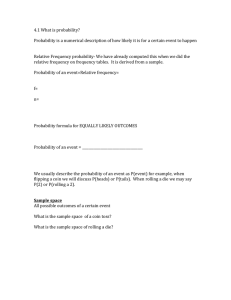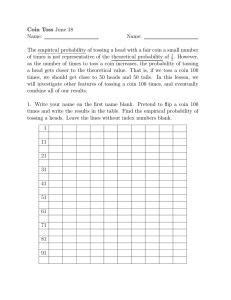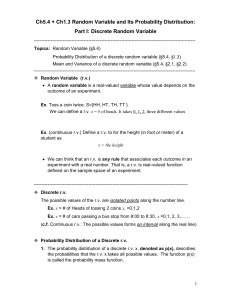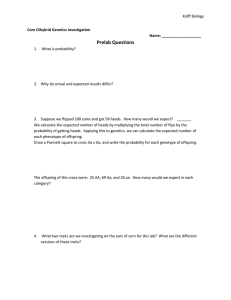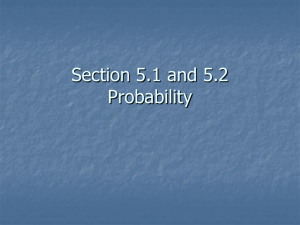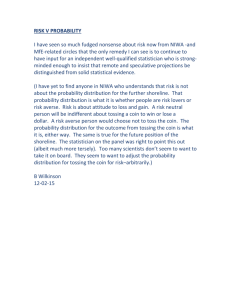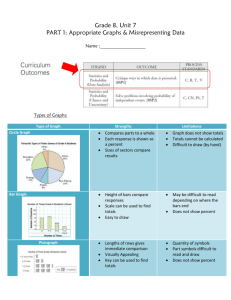SECTION 5.1 - PROBABILITY RULES
advertisement
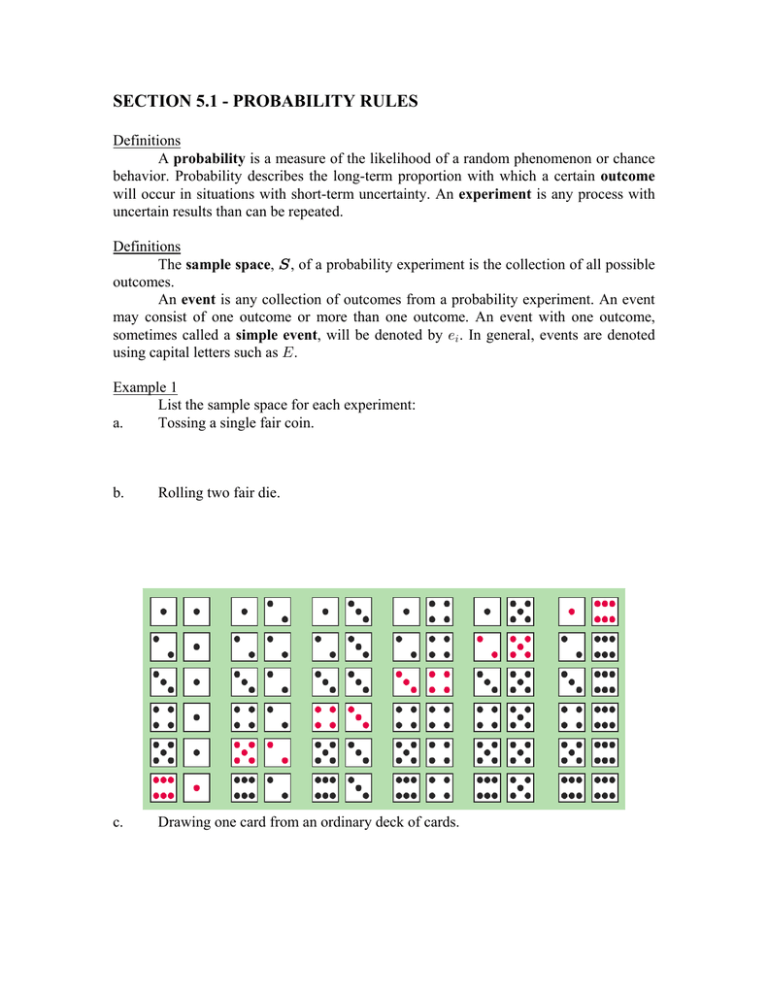
SECTION 5.1 - PROBABILITY RULES Definitions A probability is a measure of the likelihood of a random phenomenon or chance behavior. Probability describes the long-term proportion with which a certain outcome will occur in situations with short-term uncertainty. An experiment is any process with uncertain results than can be repeated. Definitions The sample space, W , of a probability experiment is the collection of all possible outcomes. An event is any collection of outcomes from a probability experiment. An event may consist of one outcome or more than one outcome. An event with one outcome, sometimes called a simple event, will be denoted by /3 . In general, events are denoted using capital letters such as I . Example 1 List the sample space for each experiment: a. Tossing a single fair coin. b. Rolling two fair die. c. Drawing one card from an ordinary deck of cards. Definition An experiment is said to have equally likely outcomes when each outcome has the same probability of occurring. Computing Probability Using the Classical Method If an experiment has 8 equally likely outcomes and if the number of ways that an event I can occur is 7, then the probability of I , T I , is number of ways that I can occur 7 T I œ œ number of possible outcomes 8 So, if W is the sample space of the this experiment, R I T I œ R W where R I is the number of outcomes in I , and R W is the number of outcomes in the sample space. Example 2 For each experiment, calculate the indicated probability: a. Experiment: Tossing a single fair coin. Event: Tossing a heads. b. Experiment: Rolling two fair die. Event: Rolling a sum of 7. c. Experiment: Drawing one card from an ordinary deck of cards. Event: Drawing an ace. Rules of Probabilities 1. The probability of an event I , T I , must be greater than or equal to ! and less than or equal to ". That is, ! Ÿ T I Ÿ " . 2. The sum of the probabilities of all outcomes must equal ". That is, if the sample space W œ e/" ß /# ß á ß /8 f , then T /" T /# â T /8 œ " Definition A probability model lists the possible outcomes of a probability experiment and each outcome's probability. Definitions If an event is impossible, then the probability of the event is !. If an event is a certainty, the probability of the event is ". An unusual event is an event that has a low probability of occurring. Approximating Probabilities Using the Empirical Approach The probability of an event I is approximately the number of times the event I is observed divided by the number of repetitions of the experiment. frequency of I T I ¸ relative frequency of I œ number of trials of experiments Example 3 Each person in class toss a single fair coin and record whether the toss was a heads (L ) or a tails (X ). Use the results of this experiment to estimate the probability of tossing a heads. Frequency heads (L ) tails (X ) Example 4 In problem 37, we learned that for some diseases, such as sickle-cell anemia, an individual will get the disease only if he or she receives both recessive alleles. This is not always the case. For example, Huntington's disease only requires one dominant gene for an individual to contract the disease. Suppose that a husband and wife, who both have a dominant Huntington's disease allele (W ) and a normal recessive allele (=), decide to have a child. a. List the possible genotypes of their offspring. b. What is the probability that the offspring will not have Huntington's disease? In other words, what is the probability that the offspring will have genotype ==? Interpret this probability. c. What is the probability that the offspring will have Huntington's disease? Definition A subjective probability of an outcome is a probability obtained on the basis of personal judgment.

![MA1S12 (Timoney) Tutorial sheet 9a [March 26–31, 2014] Name: Solutions](http://s2.studylib.net/store/data/011008034_1-934d70453529095ae058088c61b34e01-300x300.png)
![MA1S12 (Timoney) Tutorial sheet 9c [March 26–31, 2014] Name: Solution](http://s2.studylib.net/store/data/011008036_1-950eb36831628245cb39529488a7e2c1-300x300.png)

